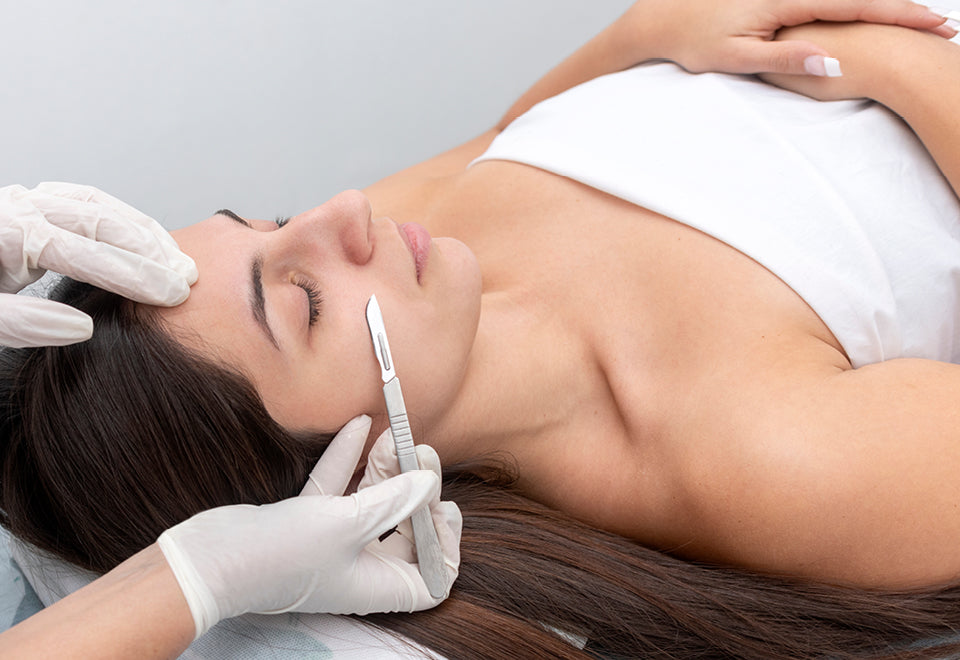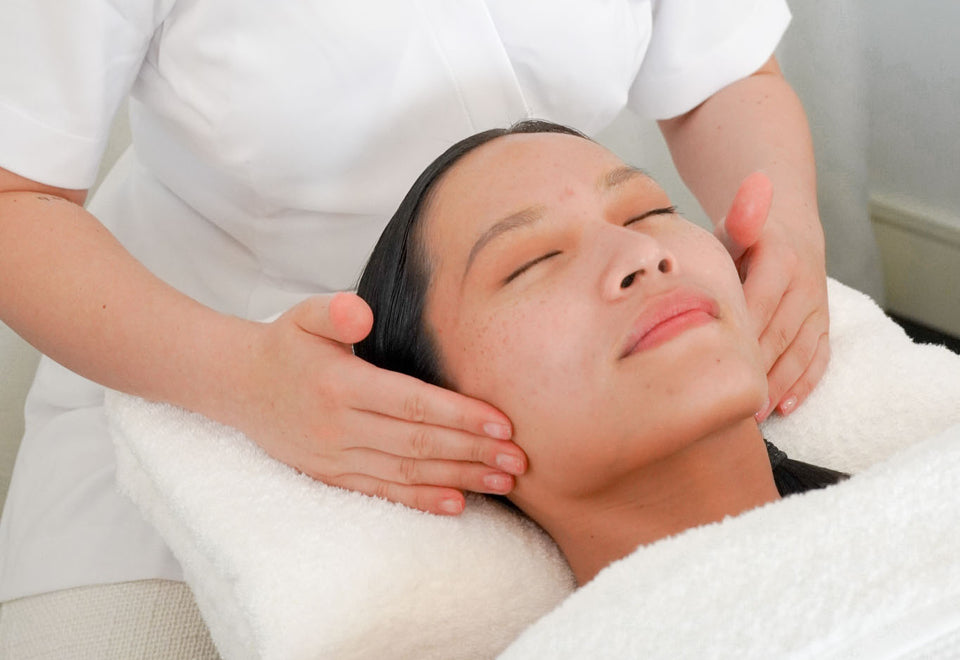Dermaplaning Facials: Benefits Beyond Removing Peach Fuzz
Are you looking for a safe and effective way to rejuvenate your skin? A dermaplaning facial might just be what you’re after. While one of the immediate perks of dermaplaning is the removal of peach fuzz, the benefits extend far beyond that.
In this blog, we'll explore the ample benefits of dermaplaning. From improved skin tone to removing peach fuzz, vellus hairs and so much more!
What is Dermaplaning?
Dermaplaning is a skin treatment that uses a surgical scalpel to gently scrape away the top layer of dead skin cells and fine hairs from the face. The procedure is painless and considered safe for all skin types when performed by a qualified professional.

The Top Benefits of Dermaplaning Facials
Removes Layers of Dead Skin Cells and Fine Hairs
Dermaplaning removes the outermost layer of dead skin cells, revealing smoother and brighter skin. The treatment also removes fine hairs, also known as peach fuzz or vellus hairs, which can trap dirt and oils and contribute to clogged pores and acne. It is a great alternative to traditional hair removal methods as it removes hairs without causing irritation or ingrown hairs.
Improves Skin Tone and Texture
By removing dead skin cells and fine hairs, dermaplaning helps to improve skin tone and texture. The treatment stimulates cell turnover and encourages the growth of new, healthy skin cells. This promotion of smoother, more even skin texture can soften the appearance of fine lines and wrinkles, as well as acne scarring.
Enhances the Effectiveness of Skincare Products
Dermaplaning exfoliation offers multiple benefits for your skin. It not only creates a smoother surface but also eliminates dead skin cells, trapped oils and other impurities that can hinder the absorption of skincare products. By removing these barriers, dermaplaning allows products to penetrate deeper into the skin, ensuring the effective delivery of their beneficial ingredients. As a result, your moisturisers, serums, and other products become more potent, nourishing and revitalising your skin for a healthier, radiant appearance.
Safe for Most Skin Types, Even Sensitive Skin
Unlike chemical peels, which can be harsh and irritating for some skin types, dermaplaning is a gentle, non-invasive treatment. When performed by a qualified therapist, it can be safe for most skin types, including sensitive skin.
Provides a Smooth Canvas for Makeup Application
Dermaplaning creates a smooth and soft canvas for flawless makeup application. With its exfoliating effect, dermaplaning ensures that your skin is free from dead skin cells and impurities, resulting in a perfect base for makeup. You'll experience makeup that glides on effortlessly, achieving a smooth and even application. The end result is a natural-looking finish that enhances your overall appearance.

Avoid The Risks Of DIY Dermaplaning
Attempting dermaplaning at home is strongly not advised for a number of reasons. It poses significant risk of injury. Dermaplaning uses a sharp blade to exfoliate the skin, and without proper training or experience, the likelihood of cuts can occur.
Another danger is the risk of sanitary concerns. Without proper sterilisation of instruments, there is an increased risk that infections and complications can occur.
To ensure both safety and effectiveness, it is strongly advised to seek professional treatment for dermaplaning.
Will Hair Grow Back Thicker After Dermaplaning?
No, hair will not grow back thicker after dermaplaning. This is a common myth about the procedure. Dermaplaning only removes the fine vellus hairs on the surface of the skin, which are different from the thick, coarse hairs on other parts of the body. Dermaplaning does not affect the hair follicles, so the hair will grow back at the same thickness and texture as before.
What to Expect During a Dermaplaning Session
During a dermaplaning session, your skin will be cleansed and prepped for the procedure. The esthetician will use a surgical scalpel to gently scrape away the top layer of dead skin cells and fine hairs from your face. The procedure is painless and typically takes around 30-45 minutes to complete. After the procedure, your skin may be slightly red and sensitive, but this should subside within a few hours.
How Often Should You Get a Dermaplaning Treatment?
The frequency of dermaplaning treatments can vary depending on your individual skin needs and goals. If you are looking to maintain fresh, dermaplane skin it is recommended to receive dermaplaning treatment every 4 to 6 weeks to maintain optimal results.
Long-Term Benefits With No Downtime
A dermaplaning procedure is non-invasive and does not require any downtime. You can resume your daily activities immediately after the treatment. However, it is recommended to avoid direct sun exposure and wear a broad-spectrum sunscreen with an SPF of 30 or higher to protect your newly revealed skin.
Is Dermaplaning Safe for Active Acne?
Dermaplaning can be safe for those with active acne, as long as the acne is not severe or inflamed. However, it is important to note that the procedure should not be performed directly on top of active acne or areas of inflammation, as this can cause further irritation and potential scarring. Your skin therapist will be able to advise you on whether dermaplaning is a suitable treatment for your skin condition.
Book Your Dermaplaning In Melbourne CBD’s Botanica Wellness Spa And Clinic
If you're looking for a way to achieve smoother, brighter, and more radiant skin, a dermaplaning facial in Melbourne’s Botanica Wellness Spa and Clinic could be the right choice for you. Lock in your next treatment with our experienced team and get ready to experience the long-term benefits of dermaplaning for yourself.
